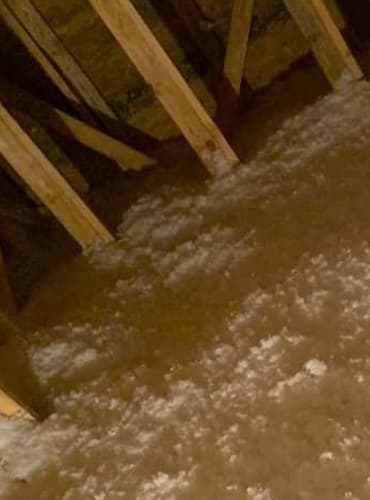Blown Insulation

Blown Insulation
Also known as blown-in insulation, is a type of insulation material that is installed using a blowing machine or equipment. It consists of loose fibers or particles that are blown into cavities, attics, or wall spaces to create a thermal barrier. Here are some benefits of using blown insulation:
- Easy installation: Blown insulation is relatively easy to install compared to other forms of insulation. The loose fibers or particles can be blown into hard-to-reach areas, irregularly shaped spaces, and around obstructions. This makes it a versatile option for insulating attics, walls, and floors, allowing for efficient coverage in various types of structures.
- Excellent coverage and sealing: The blowing process enables blown insulation to tightly fill gaps, voids, and crevices within a cavity or wall space. This helps to create a seamless thermal barrier that minimizes air leakage, reducing drafts and heat transfer. The ability to effectively seal these areas contributes to improved energy efficiency and thermal performance.
- Enhanced energy efficiency: Blown insulation provides high levels of thermal resistance, reducing heat transfer between the inside and outside of a building. By minimizing heat loss during cold seasons and heat gain during hot seasons, blown insulation helps to maintain more stable indoor temperatures, reducing the need for excessive heating or cooling. This results in lower energy consumption and reduced utility costs.
- Noise reduction: Blown insulation can also contribute to improved soundproofing by reducing noise transmission. The loose fibers or particles help to absorb sound waves, minimizing the transfer of noise between rooms or from external sources. This can enhance the overall acoustic comfort within a building, making it quieter and more peaceful.

- Versatility and adaptability: Blown insulation can be installed in both new construction and existing structures. It can be used in various areas, including attics, walls, floors, and even around pipes, electrical wires, or other obstructions. Its adaptability makes it suitable for different types of buildings and construction methods.
- Non-invasive installation: Unlike some other insulation methods that require extensive demolition or disruption to install, blown insulation can often be added without major disturbances. It minimizes the need for removing walls or ceilings, making it a convenient option for retrofitting insulation in existing structures.
- Environmentally friendly: Many blown insulation materials are made from recycled materials, such as recycled fiberglass or cellulose fibers. Using blown insulation helps to reduce waste and promote sustainability by utilizing recycled resources.
It’s important to note that the specific benefits of blown insulation can vary depending on the material used, installation techniques, and the unique characteristics of the building. Consulting with insulation professionals or contractors can provide further guidance on selecting the right type of blown insulation for specific insulation needs and desired outcomes.
